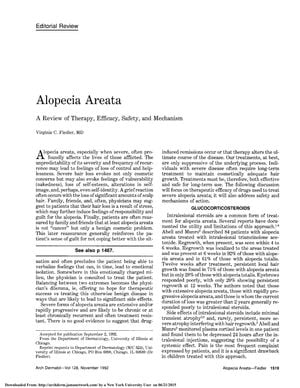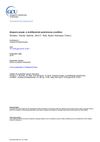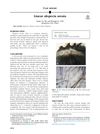Alopecia Areata
November 1992
in “
Archives of dermatology
”

TLDR Different treatments for alopecia areata have varying success rates and side effects; intralesional steroids are most effective.
The 1992 document reviews various treatments for alopecia areata, their efficacy, side effects, and mechanisms. Intralesional steroids were effective in 92% of patients with alopecia areata and 61% with alopecia totalis, but less so for extensive or long-term hair loss. Topical steroids were beneficial, especially in children, but had side effects like folliculitis. Systemic steroids had mixed results and serious side effects. Anthralin induced hair regrowth in 75% of patients with less than 75% scalp hair loss within 23 weeks. Topical minoxidil at 5% concentration showed cosmetic regrowth in 48% of patients, while oral minoxidil had a faster response but more side effects. Cyclosporin A showed potential benefits but also significant side effects. Other treatments like inosiplex, thymopentin, and nitrogen mustard had varying efficacy and side effects. The document also outlines a treatment approach based on the severity of alopecia areata, emphasizing the need for long-term treatment and the psychosocial impact of the condition. It acknowledges The Upjohn Co's support for the author's research.

